2018 Featured Speakers
2018 Featured Speakers
Ahmed Aboulnaga
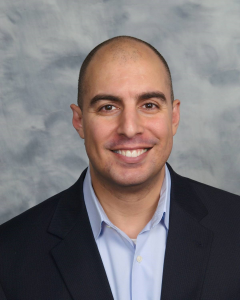
Senior Manager
Attain
Session: 5 Things Federal Contractors Need to do to Get Cybersecurity Right
Ahmed Aboulnaga is a Senior Manager at Attain, a management, technology, and strategy consulting firm headquartered in McLean, Virginia. Ahmed’s professional focus is in technical management, architecture, and consulting within Oracle, Java, and cloud technologies, having implemented enterprise solutions for commercial, government, and global customers throughout his 20 year career.
Ahmed is recognized as one of five hundred evangelists in the world via the Oracle ACE program. Ahmed has authored two books on Oracle technologies, written several published articles, and presented at major conferences throughout the years on a wide array of topics covering middleware, development, and cloud. He has been instrumental in the success of many large scale federal IT projects for the DOD, DHS, DOJ, and DOE. Ahmed has recently emphasized DevOps, cloud, and security in his current projects.
Prior to joining Attain, Ahmed has worked for leading consulting firms that include Booz Allen Hamilton, IBM, CSC, and Oracle.
Born in Washington, DC and a long term resident of Northern Virginia, Ahmed holds a master’s degree in Computer Science from George Mason University.
Vincent Alcazar
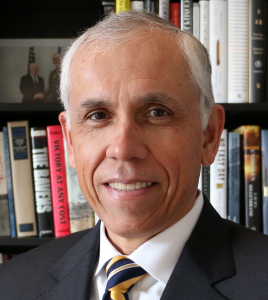
Colonel, Retired
USAF
Session: Modular Air and Missile Defense Modernization
An air supremacy and air defense pilot, war planner, and campaign strategist, COL Vince Alcazar retired from a 27-year active duty career in the US Air Force in December 2014. Vince’s links to US and international air & missile defense are deeply rooted in his aviation career path and extensive collaboration with Army and Navy air/missile defenders in training, combat employment, war planning, and advanced concept scenarios. In mid-2008, Vince co-led the first-ever US Air Force/MDA kinetic missile defense study. That study—aptly named Air Launched Hit to Kill (ALHK), was chartered to assess whether the MDA’s 2006-2007 Network Centric Air Defense Element (NCADE) research and test program was a suitable candidate for an aerial kinetic air defense interceptor carried onboard USAF air supremacy aircraft. A non-resident fellow at the Mitchell Institute of the Air Force Association, Vince is the author of an April 2018 paper titled, “The Case For Aerial Boost Phase Intercept.”
Col Ed Barker
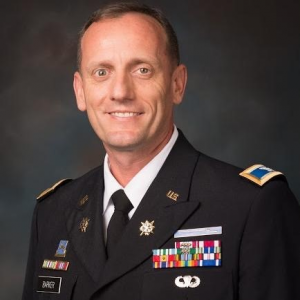
Senior Acquisition Liaison and Advisor
U.S. Army
Session: Modernizing Battlefield Communications
Colonel Barker assumed duties as the Executive Officer to the Assistant Secretary of the Army for Acquisition, Logistics and Technology - ASA (ALT) in July 2013. In these duties, he advised and assisted the ASA (ALT) in the management of the Army’s multi-billion dollar materiel enterprise.
On 3 September, 2015 Colonel Barker was chartered as the Project Manager Soldier Warrior. In addition to his role as the Project Manager he serves as the Senior Acquisition Liaison and Advisor to the Network, Soldier Lethality and Future Vertical Lift Cross Functional Teams.
His awards include the Defense Meritorious Service Medal with three Oak Leaf Clusters, Meritorious Service Medal with Oak Leaf, Joint Service Commendation Medal, Army Commendation Medal with three Oak Leaf Clusters, Army Achievement Medal, National Defense Service Medal with Bronze Service Star, Armed Forces Expeditionary Medal, Global War on Terrorism Service Medal, Valorous Unit Award, Army Service Ribbon, NATO Medal, Expert Infantryman’s Badge, and Parachutist’s Badge.
His military education includes the Infantry Officer Basic Course, Military Intelligence Transition and Advanced Courses, Army Command and General Staff College and he completed Senior Service College at the Eisenhower School in June 2015. His civilian education includes a Bachelor of Business Administration from Marshall University and a Master’s of Science in Management with an emphasis in Contracting and Industrial Procurement from the Florida Institute of Technology. He is Level III certified in Contracting and Program Management.
Colonel Barker is married to his wife of 23 years, Delena Barker, who is a fellow Marshall University graduate. They have two children, Farran Edward, who is 14 years old, and Jaden Doyle, who is 13 years old.
David Barnett

Vice President of Products and Markets
Real Time Innovations (RTI)
Session: Physical and Digital Modularity For Military And Commercial Applications
David has over 25 years of experience in distributed, real-time and IoT systems. He is currently vice president responsible for product management and market development at RTI, a leading provider of standards-compliant connectivity software for open architecture systems. Prior to RTI, he held management positions at several embedded software suppliers, including Green Hills Software and Mentor Graphics. David began his career as a software engineering lead at the Lawrence Livermore National Laboratory (LLNL). He has a BA in Computer Science from the University of California at Berkeley.
Cal Biesecker
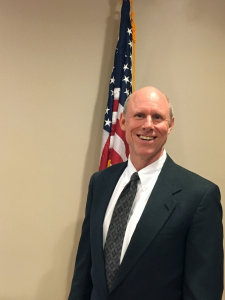
Reporter: Business/Homeland Security
Defense Daily
Session: Ensuring Security of our Homeland against Unknown Threats
John C. Bowling
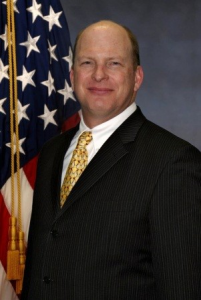
Technical Expert, Avionics Architectures and Interoperability AFLCMC/EZAC
U.S. Air Force
Session: Rapid Upgrade to Sensor Systems
John C. Bowling is an Air Force civilian electronics engineer serving as Technical Expert for Avionics Architectures and Interoperability in the Engineering and Technical Management/Services directorate of the Air Force Life Cycle Management Center (AFLCMC), Wright-Patterson AFB. AFLCMC acquires aircraft, weapons and electronics systems to provide airmen the ongoing ability to “Fly, Fight and Win!” John’s role encompasses participation in standards bodies, aircraft program office support and technical support to the airworthiness process. He has participated in the Future Airborne Capability Environment (FACE) consortium, the Sensor Open Systems Architecture (SOSA) consortium and in the Open Mission Systems (OMS) Collaborative Working Group (CWG). He serves on the steering committees for both the FACE and SOSA consortia. He advises programs on open architecture and interoperability requirements and methods throughout the acquisition lifecycle. Having served 25 years on active duty prior to his civilian service, John has garnered significant, broad experience in Air Force, joint and allied standards, communications, electronics, avionics, interoperability, and networking.
Eric “Delta” Burke
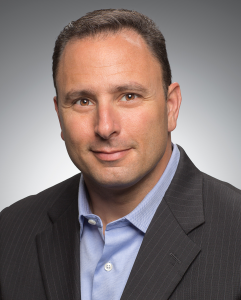
Avionics Lead for Future Vertical Lift
Harris Corp.
Session: Acquisition Reform to meet Multi-Domain Battle Requirements
H. Eric “Delta” Burke, Avionics Lead – Future Vertical Lift for Avionics of Harris Corporation. Harris avionics systems are on most of the U.S. Department of Defense’s new development platforms, including the F-22 Raptor, the F-35 Joint Strike Fighter and the F/A-18E/F Super Hornet, making them lighter, smarter, more effective and affordable. Harris is also deeply involved in research and development for next-generation mission computing and secure airborne communications technologies to ensure aviators are ready to succeed against future challenges.
Burke assumed the position of Avionics Lead in 2017. Responsibilities include customer
Burke has a Bachelor of Arts degree in History from Cal Poly, San Luis Obispo and a Master of Arts degree (w/honors) in Homeland Security from American Public University.
Harris Corporation is a leading technology innovator, solving our customers’ toughest mission-critical challenges by providing solutions that connect, inform and protect. Harris supports customers in more than 125 countries, has approximately $8 billion in annual revenue and 22,000 employees worldwide. The company is organized into four business segments: Communication Systems, Space and Intelligence Systems, Electronic Systems, and Critical Networks.
engagements with industry Prime OEM’s and direct to the service for Government Furnished Equipment (GFE) programs. He reports to the Director of Strategy and Business Development.
Previously, he served as Senior Manager, Avionics Business Development at Northrop Grumman Corporation (NGC), Woodland Hills, CA upgrading rotary wing avionics. Prior to working for NGC, Burke retired as a Lieutenant Colonel from the US Marine Corps. As a combat veteran with six deployments, he completed his last six years in the Marine Corps career as a Requirements and Resource officer at HQMC Pentagon and was the CMC representative to the 2014 Quadrennial Defense Review.
Terance Carlson
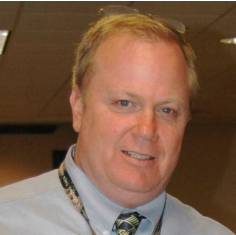
Assistant Program Executive Officer (APEO) - CIO/G6 and Chief Software Architect
Program Executive Office (PEO) Aviation
Session: Rapid Upgrade to Sensor Systems
As the CIO, Terry Carlson is responsible for PEO Aviation’s enterprise and tactical systems and network. He leads an IT support and development team that maintain the server, network, desktop, and mobile computing environments for over 3200 users on the enterprise side. His tactical team leads the ASA(ALT)’s Real Time, Safety Critical, Embedded (RTSCE) Computing Environment (CE) Working Group (WG) which consists of numerous programs across 8 PEOs. PEO Aviation’s aircraft including rotary, fixed wing and unmanned systems are adopting the Future Airborne Capability Environment (FACE) to meet the Army Common Operating Environment (COE) standards and architecture. FACE is one of the Real Time Interoperability Framework enablers that the RTSCE CEWG has adopted for its member systems to meet COE compliance. Terry currently serves as the Chair for the FACE Consortium Steering Committee and is a past chair of the FACE Advisory Board and is an active member of the Outreach Committee. The FACE Consortium is managed by the Open Group and has over 90 industry, government, and academic organizations represented by over 1200 members. He is also the Chief Software Architect for PEO Aviation with responsibility for assisting the tactical systems to achieve Army Interoperability Certification (AIC) via COE. His PEO Aviation team is responsible for Information Assurance (IA) of both enterprise and tactical systems. This team assists PEO AVN systems in meeting IA standards to receive an Authority to Operate (ATO) and a Certificate of Networthiness (CoN).
Judy Cerenzia
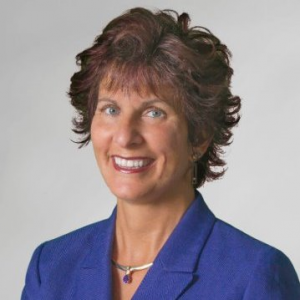
FACE™ Consortium Director
The Open Group
Session: Rapid Upgrade to Sensor Systems
Judy Cerenzia is currently the Director of The Open Group FACE™ (Future Airborne Capability Environment) Consortium and acting Director of their SOSA™ (Sensor Open Systems Architecture) Consortium. Judy has 15+ years senior program management experience leading cross-functional and cross-organizational teams to reach consensus, define, and meet business and technical goals during project lifecycles. She is a TOGAF® 9 certified, DODAF 2.0 knowledgeable, and has led a variety of government/industry/academic collaborative activities. As a Research Engineer for Penn State’s Applied Research Lab she coordinated multiple, large projects for weapon technology development and performance evaluation for the Office of Naval Research (ONR), the Naval Undersea Warfare Center (NUWC) and the Navy's Torpedo Program Office (PMS 404). She holds a BS in Mathematics and MS in Acoustics from Penn State University.
Dr. Steven A. Davidson

Director, Product Family Development and Open Systems Architecture
Raytheon Space & Airborne Systems
Session: Rapid Upgrade to Sensor Systems
Dr. Steve Davidson is the Director of Product Family Development and Open System Architecture at Raytheon Space and Airborne Systems. He is an Engineering Fellow and a Certified Architect with nearly three decades in the industry as Technologist, Systems Engineer, and Architect.
Prior to this current assignment, he was the Corporate Systems Engineering and Architecture Technology Area Director (SE&A TAD). As the SE&A TAD, his primary focus was commonality, interoperability, and reuse through the employment of modularity, open system architectures, standards, and product platform thinking (CIROAPP).
Dr. Davidson helped create and led the Enterprise Architecture team of the Future Airborne Capability Environment (FACE) Consortium, and is the Chair of the Architecture Working Group of the Sensor Open Systems Architecture (SOSA) Consortium. He’s been involved in several other OSA activities, including the USAF Open Mission Systems (OMS) Communications Subgroup, the Army's VICTORY (Vehicular Integration for C4ISR/EW Interoperability) Data Bus, Application Interface and Information Assurance Working Groups, and was also Co-Chair of the Network Management Working Group for the DirecNet Consortium.
Dr. Davidson was Chief Architect for an ISR Mission Systems Integration activity, the Chief Architect for the Army Expeditionary Warrior Experiment (Spiral F), and the Lead Architect for the DISA GIG Policy-based Network Management program. He's been involved in numerous network technology developments, and was the technical lead for Raytheon's JALN effort.
Dr. Davidson joined Raytheon in mid-2008 from MIT Lincoln Laboratory. During his 20+ years at Lincoln, he led a wide variety of R&D efforts including the USAF Mobile Edge Network Systems Architecture (MENSA) project, TSAT network analysis, and was the Program Manager for Lincoln’s overall Aegis BMD program. Earlier in his career he worked on electro-optic sensor technologies and helped develop the Firepond wideband imaging laser radar
He holds a PhD in Physics from the University of Colorado (for research done at the National Bureau of Standards), and a BA in Physics from Williams College
Jim Evangelos
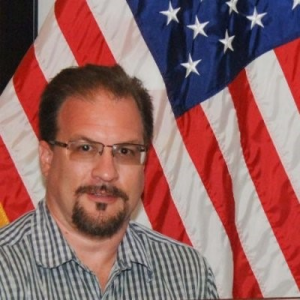
Deputy Director, JTNC
DoD Waveform Standards Division
Session: Modular Software Frameworks Overview
Mr. James Evangelos currently serves as the Deputry Director of Joint Tactical Networking Center (JTNC), in the Standards Division. He is also a Senior Electronics Engineer with a 27+ year history of experience both in Industry and with the Army. He has served the Technology Planning and Outreach (TPO) Associate Director’s office within the Space & Terrestrial Communications Directorate (S&TCD) of CERDEC at APG. He has Industry experience in electronics communications systems, systems engineering, biometrics as well as a significant background in Software Engineering, specializing in C++ Component Software Development. Mr. Evangelos was the Software Lead and a Principle Software Engineer for MUOS SCA 2.2.2 development at General Dynamics (GDC4S) in Sunrise, Florida. His Industry experience includes GDC4S, CrossMatch Technologies, Satellite Research Technologies (SRT), and Computer Sciences Corporation (CSC). In 2010, he served as PdM Network Management, and led the development of early Network Management programs, which were the pre-cursors and foundations of the JTRs Enterprise Network Management (JENM) program. Since 2012, he has served as an Adjunct Professor in Physics, Chemistry, Engineering at three local colleges near Aberdeen Proving Ground, and over the years has taught hundreds of undergraduate students encouraging them to persue the STEM disciplines. He has authored a YouTube Channel dedicated to STEM subjects and learning. He is a graduate of Stevens Institute of Technology (1991) receiving a Bachelor of Engineering in Electrical Engineering (B.E.E.E.), and has received a Master’s in Electrical Engineering (2012) from the University of South Florida. He is DAWIA Certified level III Engineer, and a member of the Army Acquisition Corps. He also has received numerous Army awards, including the Achievement Medal for Civilian Service. Mr. Evangelos is a native of Trenton, New Jersey, and has resided in Maryland since 2010.
Lt Col Pink Floyd
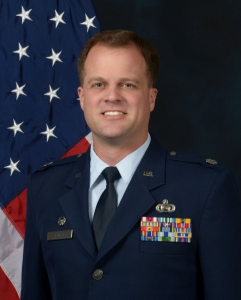
Deputy Chief of the Algorithmic Warfare Cross Functional Team (AWCFT) within the Office of the Undersecretary of Defense for Int
USAF
Session: Project Maven: Automated Full-Motion Video Surveillance
Lt Col Garry “Pink” Floyd is a career Air Force intelligence officer currently serving as the Deputy Chief of the Algorithmic Warfare Cross Functional Team (AWCFT) within the Office of the Undersecretary of Defense for Intelligence. Prior to this assignment, Lieutenant Colonel Floyd served in a variety of roles at the squadron, wing, major command, joint and national agency levels. He is a former squadron commander of the 381st Intelligence Squadron at the National Security Agency’s Alaska Mission Operations Center, Joint Base Elmendorf-Richardson. Lieutenant Colonel Floyd holds Masters Degrees including International Relations (Troy University), Military Art and Science (US Army School of Advanced Military Studies), and most recently, Strategy and Technology Integration (Air University).
James Geurts
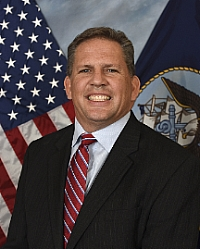
Assistant Secretary of the Navy for Research, Development & Acquisition
U.S. Navy
Session: Morning Keynote
On Dec. 5, 2017, Mr. James F. Geurts was sworn in as Assistant Secretary of the Navy for Research, Development & Acquisition (ASN (RD&A)), following his confirmation by the Senate November 2017. As the Navy’s acquisition executive, Mr. Geurts has oversight of an annual budget in excess of $60 billion and is responsible for equipping and supporting the finest Sailors and Marines in the world with the best platforms, systems and technology as they operate around the globe in defense of the Nation.
Mr. Geurts previously served as the Acquisition Executive, U.S.. Special Operations Command (USSOCOM), at MacDill Air Force Base (AFB), Florida, where he was responsible for all special operations forces acquisition, technology and logistics. In this position his innovative leadership and technological ingenuity provided rapid and affordable acquisition that positively impacted the USSOCOM acquisition work force and the special operations forces capability on the battlefield. These contributions were recognized by both private and public institutions during his tenure to include earning the Presidential Rank Award, USSOCOM Medal, William Perry Award and Federal Times Vanguard Award for Executive of the Year.
Prior to Senior Executive Service, Mr. Geurts began his career as an Air Force officer where he served as an acquisition program manager with engineering and program management leadership positions in numerous weapon systems including intercontinental ballistic missiles, surveillance platforms, tactical fighter aircraft, advanced avionics systems, stealth cruise missiles, training systems and manned and unmanned special operations aircraft.
He has over 30 years of extensive joint acquisition experience and served in all levels of acquisition leadership positions including Acquisition Executive, Program Executive Officer and Program Manager of Major Defense Acquisition Programs.
Mr. Geurts is a distinguished 1987 ROTC graduate from Lehigh University where he received a Bachelor of Science in Electrical Engineering. He holds a Master of Science in Electrical Engineering from Air Force Institute of Technology, Wright-Patterson AFB and in National Security Resourcing from Industrial College of the Armed Forces, National Defense University, Washington, D.C. Mr. Geurts also attended executive leadership and international studies programs at Harvard Kennedy School and George Washington Elliot School.
Nick Guertin
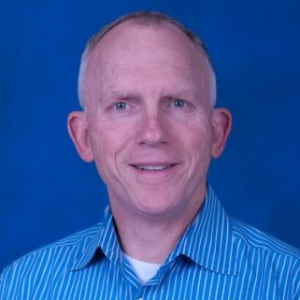
Senior Software Systems Engineer
Software Engineering Institute
Session: Ensuring Security of our Homeland against Unknown Threats
Matthew Hederstrom

Chief Executive Officer
Varley
Session: Testing & Troubleshooting new technologies on Legacy systems
Mr. Hederstrom has broad, 20-year experience in the government and commercial Aerospace and Defense space. After earning his Masters of Science in Aerospace Engineering from Virginia Tech, Mr. Hederstrom developed state-of-the-art control system designs for Lockheed Martin Skunk Works in Palmdale, CA. He then managed the Defense division of a small business designing and delivering tactical precision approach aids to support military and disaster relief operations. He successfully deployed the technology with not only with the US Marines and US Air Force, but also with the Royal Australian Air Force. Mr. Hederstrom then managed the sales and marketing of a tactical computer hardware company in the high-tech Dulles corridor of northern Virginia, driving record revenue for the company. Currently, Mr. Hederstrom serves as CEO of Varley USA, Inc., Varley Group’s US-based subsidiary, focusing on airborne avionics development and integration located in Patuxent River, MD.
Peter Huessy

Director of Strategic Deterrent Studies
Mitchell Institute for Aerospace Studies
Session: Modular Air and Missile Defense Modernization
Mr. Peter Huessy is President of his own defense consulting firm, GeoStrategic Analysis, founded in 1981, and was the senior defense consultant at the National Defense University Foundation for 22 years. He is now the National Security Fellow at the AFPC, and Director of Strategic Deterrent Studies at the Mitchell Institute of the Air Force Association, following 6 years as Senior Defense Consultant at the Air Force Association. Mr. Huessy has served as an expert defense and national security analyst for over 42 years, helping his clients cover congressional and administration activities, and related budget and policy developments, on terrorism, counter-terrorism, immigration, state-sponsored terrorism, missile defense, especially US-Israeli joint defense efforts, nuclear deterrence, arms control, nuclear modernization, defense policy, proliferation, as well as tactical and strategic air power, airlift, space power to the war-fighter and nuclear enterprise matters and such state and non-state actors as North Korea, China, Iran, Russia, Syria, Venezuela and Hezbollah, Hamas and Al Qaeda. This also includes monitoring activities of think tanks, non-governmental organizations, and other US government departments, as well as projecting future actions of Congress in this area. His specialty is developing and implementing public policy campaigns to secure support for important national security objectives.
Mark J. Laustra
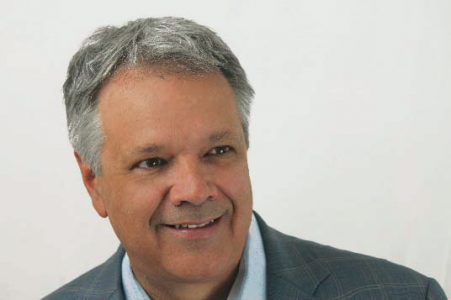
Vice President, Global Business Development & Government Relations, Chairman, Security Manufacturers Coalition
Analogic Corp.
Session: Ensuring Security of our Homeland against Unknown Threats
Mark Laustra has more than 25 years of experience successfully bringing innovative security
technologies to market and managing complex technology-based programs for aviation security, cargo inspection, and critical infrastructure protection. A frequent contributor to U.S. Congressional hearings, industry forums and media outlets such as CNN, Fox News, and CNBC, Mark is also recognized as a leading expert on policy and regulatory matters related to aviation security technology.
Mark has expertise in the use of non-intrusive inspection and threat detection technologies to
mitigate threats posed to aviation and other high-value assets by chemical, biological,
radiological, nuclear, and explosive (CBRNE) agents.
Mark is currently serving as Vice President of Global Business Development and Government Relations for Analogic Corporation, a leading manufacturer of Computed Tomography (CT) technology, based in Peabody, Massachusetts. At Analogic, Mark and his team are focused on launching the ConneCT, Analogic’s new checkpoint CT screening solution and building Analogic’s portfolio of innovative security technology solutions. Prior to joining Analogic, Mark was Vice President for Smiths Detection, where he worked with the US Department of Homeland Security to successfully deploy the first walk through people screening portal, the first Multiview checkpoint X-Ray system, and automated screening lane solution.
Mark holds a Bachelor of Science degree from the University of Central Florida majoring in Business Management and is currently serving as Chairman of the Security Manufacturers Coalition, the unified voice to the Federal Government of companies that manufacture security screening technology.
Doug MacIvor
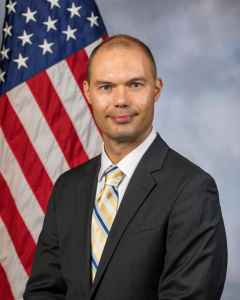
Acting Manager, Countermeasures Architecture Branch
Transportation Security Administration (TSA)
Session: Ensuring Security of our Homeland against Unknown Threats
Doug MacIvor is the acting manager for the Countermeasures Architecture Branch in TSA’s Office of Requirements and Capabilities Analysis. He has been with TSA for over 8 years, serving as one of the first test engineers at the TSA Systems Integration Facility, as a risk analyst leading efforts to model & connect intelligence information to TSA acquisitions, as a detailee to the Senate Commerce Committee, and as a student at the USAF Air War College class of 2018. Prior to joining TSA Doug was an active-duty C-17 pilot in the Air Force, and currently flies 737s as a Lieutenant Colonel in the DC Air National Guard. He has a bachelor’s degree in aerospace engineering from MIT and confesses to having two masters’ degrees from USAF’s Air University.
Nilo Maniquis
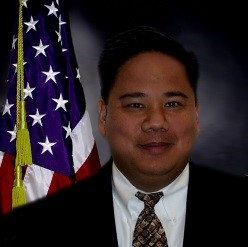
Ship Systems and Integration Engineer
U.S. Navy
Session: Physical and Digital Modularity For Military And Commercial Applications
Mr. Maniquis graduated from the Illinois Institute of Technology in 1985 with a Bachelor of Science degree in Mechanical/Aerospace Engineering. Upon graduation, he began his federal service career as an Electronics Engineer for the Naval Ship Weapon Systems Engineering Station (NSWSES), Port Hueneme, CA, in the Tartar Missile Department.
In 1987, Mr. Maniquis transferred to the Gun Weapons Department as project leader and on-site In-Service Engineering Agent (ISEA) for the Gun Fire Control System (GFCS) MK 86 provided technical assistance and training to Fleet and naval land based site personnel.
In 1989, he worked for the AEGIS Combat System (ACS) In-Service Engineering Agent (ISEA) as part of a detachment located at the Naval Surface Warfare Center Dahlgren Division (NSWCDD) as the non-AWS Computer Program Delivery Manager.
In 1995, Mr. Maniquis became the AEGIS Surface Warfare (SUW)/Strike Warfare (STW)/Naval Surface Fire Support (NSFS)/Land Attack Warfare (LAW) System Engineer in the Program Executive Office Surface Combatants/AEGIS Program (PEO SC/AP). He was responsible for the systems engineering and technical oversight supporting the SUW/STW/NSFS/LAW detect, control, and engage functions of the AEGIS combat system.
In 1997, he assumed duties as the Combat System (CS) Waterfront Integration Manager in the PEO for Integrated Warfare Systems (PEO IWS), managing, directing, and controlling all CS integration activities associated with ship design, in-service engineering, and lifetime support engineering during the construction phase of the AEGIS Destroyer Program. He was responsible for managing Aegis Test Teams (ATTs) in each of the DDG 51 Class building yards consisting of over 300 government and contractor support personnel.
In 2004, Mr. Maniquis assumed duties as the Combat System Ship Integration and Test Project Officer in PEO IWS, overseeing all CS integration activities during all phases of ship design, in-service engineering, and lifetime support engineering for all ship combatants including applying Enterprise solutions defining CS integration requirements, weapon system performance and product baseline improvements.
In 2010, he assumed duties as the Deputy Major Program Manager for PEO IWS Integrated Combat Systems (PEO IWS 1.0) responsible for all aspects of the AEGIS Combat System and overseeing over 100 government and military personnel. He also was responsible for the planning the movement of over 450 PEO IWS personnel to temporary spaces following the events of 9/16/2013 and their subsequent return in 2015.
In 2015, Mr. Maniquis took his present position as the PEO IWS Strategic Engineer for Future Surface Navy Sea Power responsible for developing the PEO's 30 Year Plan for Future Surface Navy Sea Power.
Mr. Maniquis is a graduate of Advanced Program Management Course taught at the Defense Systems Management College in Fort Belvoir, Virginia. He has attained Level III Certification in the Advanced Program Management and Advanced System Planning, Research, Development & Engineering Career Fields.
Mr. Maniquis is a recipient of the Navy Meritorious Civilian Service Award and numerous Awards for Individual and Team performance.
Tom McVey

Attorney
Williams Mullen
Session: Complying with ITAR Requirements in a Modular Open System Architecture
Tom McVey is the chair of the International Section at Williams Mullen. He focuses his practice on international business law, including the Export Administration Regulations, ITAR, OFAC sanctions programs, the Foreign Corrupt Practices Act, the anti-boycott laws and the Committee on Foreign Investment in the United States (CFIUS). He also advises on cross-border and domestic business transactions, including mergers and acquisitions, private equity, joint ventures, corporate compliance and international business planning. He was a member of the U.S. delegation to the United Nations Commission on International Trade Law (UNCITRAL), 23rd Plenary Session, 1990-1992.
Timothy Meyers
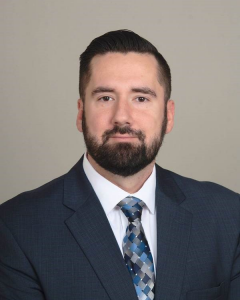
Senior Cybersecurity Specialist
Attain
Session: 5 Things Federal Contractors Need to do to Get Cybersecurity Right
Timothy Meyers is a Senior Cybersecurity Specialist at Attain, a management, technology, and strategy consulting firm headquartered in McLean, Virginia. Timothy has spent the last 15+ years in technical management and cybersecurity working under various roles: Infantryman - US Army, Electronic Engineer - USAF-ANG, Cyber Defense - USAF-ANG, IT Security & Communication Specialist - BNSF, Application Security Engineer - Seagate, Security Operations Center (SOC) Manager - IBM Cloud, Pen Test Manager - IBM Cloud, Cyber Security Technical Leadership - Accenture Federal Services.
Timothy was the 5th individual in the state of Oklahoma to become certified as a forensic examiner with EnCase-Guidance. Timothy also helped train the 8th individual in the state of Oklahoma to become certified with Encase. Timothy has been inducted into Google’s Hall of Fame for discovering several critical vulnerabilities relating to Google products and services. Timothy’s hobbies are computer forensics, exploit development, application security (bug hunting), spending time with his family, and watching college football.
Timothy was born in Shawnee, OK and attended Oklahoma State University Institute of Technology where he received his double bachelors degrees in IT Enterprise Management and Information Assurance and Forensics.
Philip Newcomb
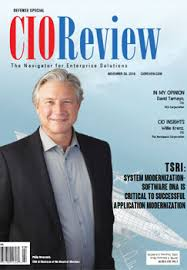
Founder/Chairman/CEO and CTO
The Software Revolution, Inc. (TSRI)
Session: Physical and Digital Modularity For Military And Commercial Applications
Chariman/CTO and Founder of The Software Revolution, Inc & Co-Chair ADM Task Force, and recipient of the 2011 IEEEE Stevens Award for his leadership in applying artificial intelligence, formal methods and rule-based technologies to foster innovative products and services for reliable reengineering of mission-critical and high-assurance information systems. Mr. Newcomb's thought leadership spans 40 years in R&D and more than 175 large-scale modernization projects, most notably TopSky (for Thales Group/Air Traffic Management) which is installed as the primary flight operation software at 40% of airports worldwide. The 2011 deployment of Topsky (transformed from Ada to Java by TSRI) constituted a major breakthrough in the acceptance of reverse and reengineering technologies and automated transformation for large-scale safety-critical and highly-regulated software systems. Mr. Newcomb is Coauthor with William Ulrich of Information Systems Transformation: Architecture Driven Modernization Case Studies., Morgan-Kaufman (OMG Series), 2010.
Steve Nunn
President and CEO
The Open Group
Steve Nunn is President and CEO of The Open Group – a global consortium that enables the achievement of business objectives through technology standards. He is also President of the Association of Enterprise Architects (AEA).
Steve joined The Open Group in 1993, spending the majority of his time as Chief Operating Officer and General Counsel. He was also CEO of the AEA from 2010 until 2015.
Steve is a lawyer by training, has an L.L.B. (Hons) in Law with French and retains a current legal practicing certificate. Having spent most of his life in the UK, Steve has lived in the San Francisco Bay Area since 2007. He enjoys spending time with his family, walking, playing golf, 80s music, and is a lifelong West Ham United fan.
Monique Ofoli
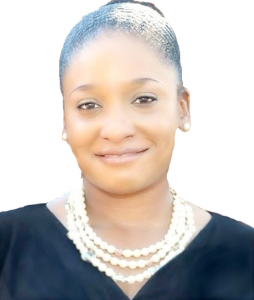
Engility Contractor, Modular Open Systems Lead for Engineering Tools and Environments
Office of the Deputy Assistant Secretary of Defense, Systems Engineering
Session: Acquisition Reform to meet Multi-Domain Battle Requirements
Dan Parsons
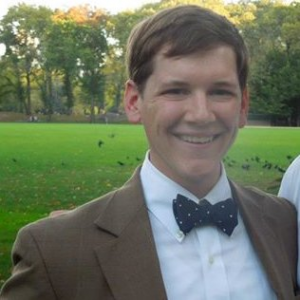
Editor, Defense & Open Architecture
Defense Daily
Session: Breakfast
Tom Rodgers
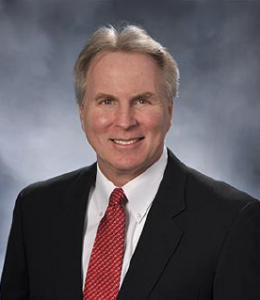
Vice President, Rotary and Mission Systems (RMS)
Lockheed Martin
Session: Acquisition Reform to meet Multi-Domain Battle Requirements
Tom Rodgers is a vice president within Lockheed Martin’s Rotary & Mission Systems (RMS) business area. In this role, Mr. Rodgers is responsible for providing best-value, world-class technology, designs and product support while ensuring commitments are met on current and future work. Tom is also responsible for integrating capabilities across RMS and the development of people, processes, tools and technology to meet the changing needs of the RMS business. Mr. Rodgers joined Lockheed Martin in 1983 and has held various positions within program management and technical operations throughout his career. During this time, Mr. Rodgers gained experience in high-technology program management, systems and software engineering and business development for major defense programs.
Mr. Rodgers obtained his B.S. degree in mathematics from Villanova University, his master’s of engineering degree in computer and information science from the University of Pennsylvania and his MBA from Monmouth University.
Dr. Douglas C. Schmidt
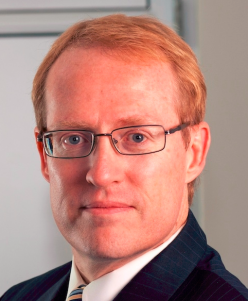
Cornelius Vanderbilt Professor of Computer Science and Associate Chair of the Electrical Engineering and Computer Science Depart
Vanderbilt University
Session: Physical and Digital Modularity For Military And Commercial Applications
Dr. Douglas C. Schmidt is the Cornelius Vanderbilt Professor of Computer Science and Associate Chair of the Electrical Engineering and Computer Science Department at Vanderbilt University. He is also a Visiting Scientist at the Software Engineering Institute (SEI) at Carnegie Mellon University (CMU). From 2010-2014 he served a member of the Air Force Scientific Advisory Board, where he served as Vice Chair of a study on Cyber Situational Awareness for Air Force mission operations.
Dr. Schmidt also served on the Advisory Board for the Future Airborne Capability Environment (FACE). From 2000 to 2003 Dr. Schmidt served as a Deputy Office Director and a Program Manager at DARPA, where he led the national research and development effort on middleware for distributed real-time and embedded (DRE) systems.
Dr. Schmidt's research covers a range of software-related topics, including patterns, optimization techniques, and empirical analyses of middleware frameworks for distributed real-time embedded systems and mobile cloud computing applications. In addition to his academic research, commercial experience, and government service, Dr. Schmidt has led the development of ACE, TAO, CIAO, and CoSMIC for the past three decades. These open-source middleware frameworks and model-driven tools constitute some of the most successful examples of software R&D ever transitioned from research to industry, being widely used by thousands of companies and agencies worldwide in many domains, including national defense and security, datacom/telecom, financial services, healthcare, and online gaming.
Dr. Richard Soley
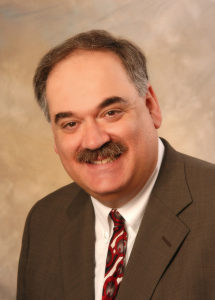
Chairman and CEO
Object Management Group
Session: The Role of Standards within MOSA
Dr. Richard Mark Soley is Executive Director of the Industrial Internet Consortium and is responsible for the vision and direction of the organization. In addition to this role, Dr. Soley is Chairman and CEO of the Object Management Group (OMG) – an international, nonprofit computer industry standards consortium -- and Executive Director of the Cloud Standards Customer Council – an end-user advocacy group.
Previously, Dr. Soley was a cofounder and former Chairman/CEO of A. I. Architects, Inc., maker of the 386 HummingBoard and other PC and workstation hardware and software. Prior to that, he consulted for various technology companies and venture firms on matters pertaining to software investment opportunities. Dr. Soley has also consulted for IBM, Motorola, PictureTel, Texas Instruments, Gold Hill Computer and others. He began his professional life at Honeywell Computer Systems working on the Multics operating system.
A native of Baltimore, Maryland, U.S.A., Dr. Soley holds bachelor's, master's and doctoral degrees in Computer Science and Engineering from the Massachusetts Institute of Technology.
Chris Speights
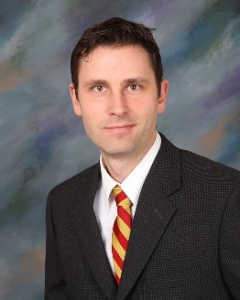
Director, Platform System Integration Engineering & Technology
Sikorsky- A Lockheed Martin Company
Session: Acquisition Reform to meet Multi-Domain Battle Requirements
Chris is responsible for leading the Sikorsky Platform System Integration Engineering organization which is accountable for the design, development, integration, and certification of the avionics, flight controls, software, and hydraulic systems on all Sikorsky aircraft. His organization also sets the vision on design tools and methodologies to advance the design and development process for advanced system integration efforts including the use of model based design and open systems architectures and approaches.
Chris brings more than 20 years of engineering and program management experience to this role. Chris joined Sikorsky in 2010 and has held the positions of S-70i Chief Engineer, S-70i Senior Program Manager, and Senior Platform Manager for Hawk Platforms. Prior to joining Sikorsky, he spent 12 years at Honeywell in Project Engineering, Program Management, and Marketing & Product Management roles.
Chris holds a Bachelor of Science degree in Mechanical Engineering and an MBA from the University of Southern California, holds two patents, is a Six Sigma Green Belt, and is a certified Project Management Professional. Chris is a recognized champion for Diversity & Inclusion within Lockheed and also leads Sikorsky’s STEM Outreach Council to promote STEM initiatives within the company and the community.
Justin Taylor
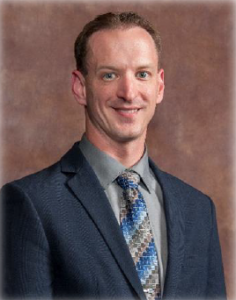
Director, Mission Systems Roadmaps Advanced Development Programs
Lockheed Martin
Session: Rapid Upgrade to Sensor Systems
Mr. Taylor serves as Director for the Skunk Works Mission Systems Roadmaps organization. In this position, he is responsible for identifying, maturing, demonstrating, and transitioning key technology and capability to address the needs for all Aeronautics platforms. He directs the portfolio of mission systems technology roadmaps in order to ensure Aeronautics platforms are responsive to future technology needs and evolving threats by aligning innovative research & development.
Prior to this position, Mr. Taylor served as senior manager of the Open System Architecture (OSA) portfolio within the Mission Systems Roadmaps organization. He has been leading open architecture teams and programs since 2010, including serving as the Enterprise-OSA (E-OSA) PM and the LM Program Manager & Principal Investigator for DARPA’s System of Systems Integration Technology & Experimentation (SoSITE) program.
Mr. Taylor began his career at LM Aero in 2000 and has served in leadership roles progressing from virtual simulation experimentation to various flight test programs, including modifications to F-22, F-16, U-2, and the F-35 Flying Test Bed. He has extensive modeling & simulation design, development, integration, and experimentation experience as well as technical expertise in leading the design and development of airborne mission systems open architectures.
Mr. Taylor holds a Bachelor of Science Degree in Computer Science from the University of Texas, is a graduate of LM’s Advanced Technology Leadership Program (ATLP), and is a member of LM’s Program
Management Development Program (PMDP). He is an active member of the community, serving as Troopmaster of an outdoor adventure program for boys and young men. He has also served in various leadership positions for an adult ice hockey organization since 2006, including director of hockey operations and chairman of the board of directors.
Vince Tobin
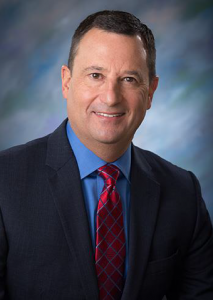
Executive Vice President, Military Business
Bell Helicopter
Session: Acquisition Reform to meet Multi-Domain Battle Requirements
Vince Tobin was named Executive Vice President, Military Business in June 2017, and is a member of Bell Helicopter’s Executive Leadership Team. Vince leads the Military Business organization and is responsible for providing strategic direction, overall management and performance for all military programs and business development efforts. His previous assignment was as Vice President for Advanced Tiltrotor Systems. In this role he was responsible for program management of tilt rotor development at Bell Helicopter to include the V-280 Valor and V-247. Prior to this role, he served as the Bell Vice President and Bell Boeing Program Director for the V-22 Osprey. In this role, Vince had program management responsibility for development, production and sustainment of the V-22 for the USMC, USAF, the US Navy and international customers.
Randall G. Walden
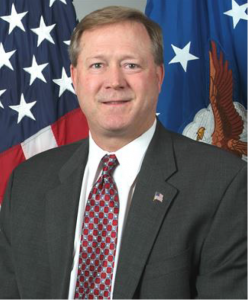
Member of the Senior Executive Service, Director and Program Executive Officer for the Air Force Rapid Capabilities Office
U.S. Air Force
Session: Morning Plenary
Randall G. Walden, a member of the Senior Executive Service, is Director and Program Executive Officer for the Air Force Rapid Capabilities Office, Office of the Administrative Assistant to the Secretary of the Air Force, Washington, D.C. He directs selected study, development and fielding activities tasked directly by the Under Secretary of Defense for Acquisition, Technology and Logistics, the Secretary of the Air Force, the Chief of Staff of the Air Force and the Assistant Secretary for the Air Force for Acquisition. The Air Force Rapid Capabilities Office has been responsible for development and deployment of significant upgrades to the Integrated Air Defense System now operational around the National Capital Region and the launch and experimental operations of the X-37 Orbital Test Vehicle. Other responsibilities include technical integration of Department of Defense classified activities, and the representation of these activities to Headquarters U.S. Air Force, the Office of the Secretary of Defense, Congress and the White House.
Lt Gen Robert Walsh
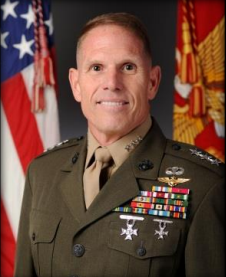
Chief of Marine Corps Combat Development Command and Deputy Commandant, Combat Development and Integration
Marine Corps
Session: Morning Keynote
Lieutenant General Walsh was commissioned a Second Lieutenant from the United States Naval Academy in May 1979. After completing The Basic School he was assigned as an infantry platoon commander in 1st Battalion, 7th Marines. He reported to Pensacola, FL for flight training and was designated a Naval Aviator in October 1981. Upon completion of an assignment to VT-26 as a Selectively Retained Graduate and the F4 training syllabus he was ordered to VMFA-115 at Marine Corps Air Station Beaufort, SC in November 1983. While in VMFA-115 he transitioned to the F/A-18 Hornet, attended the U.S. Navy Fighter Weapons School, and made two deployments before assuming duties as a flight instructor at TOPGUN in 1987. He returned to MCAS Beaufort in January 1990 and was assigned to VMFA-251, making two WESTPAC deployments, and was selected as the 1st Marine Aircraft Wing Aviator of the Year. In July 1993, he reported to the 9th Marine Regiment as the Air Officer. He attended the Air Command and Staff College at Maxwell AFB before reporting to Headquarters, U.S. European Command, Stuttgart, Germany in 1995 where he served in the Plans and Policy Directorate. In 1998, he returned to MCAS Beaufort for a third tour in Marine Aircraft Group 31 where he served as the Commanding Officer of VMFA-115 and deployed to both the European and Western Pacific Theaters. He graduated from the National War College in Washington D.C. in June 2002 with a Masters of Science in National Security Strategy. From there he reported to Headquarters, U.S. Marine Corps, where he served in the Aviation Department. After his Branch head tour, Lieutenant General Walsh returned to MCAS Beaufort as the Commanding Officer of Marine Aircraft Group 31 from June 2004 to May 2006. Following command, he returned to Headquarters, U.S. Marine Corps, as the Assistant Deputy Commandant for Aviation. In May 2008, Lieutenant General Walsh became the Commanding General of the 2d Marine Aircraft Wing and deployed to Operation Iraqi Freedom 09 as the Commanding General of the 2d Marine Aircraft Wing (Forward). In August 2010 he assumed the duties as the Director of Operations, United States Northern Command. In June 2012 he became the Deputy Commanding General, Marine Corps Combat Development Command. In July 2013, Lieutenant General Walsh assumed duties as Director, Expeditionary Warfare Division for the Chief of Naval Operations. In August 2015, Lieutenant General Walsh became the Commanding General, Marine Corps Combat Development Command; Commander, Marine Corps Forces Strategic Command, and the Deputy Commandant for Combat Development and Integration.
John Weiler
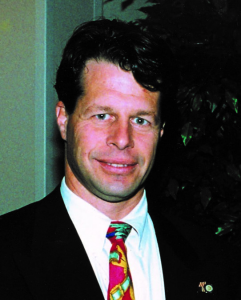
Managing Director/CIO, Interoperability Clearinghouse (ICH) Co-Founder/Vice Chair
IT Acquisition Advisory Council (IT-AAC)
Session: Solutions Architecture Lab
John A. Weiler is a recognized IT Management leader, with four decades of senior IT experience in commercial and defense positions. He also has guided major IT projects with nearly half of the federal agencies and been instrumental in the drafting of FITARA and several NDAA legislative directives. He has been leading champion of Federal IT/Cyber Reforms as Managing Director and CIO at the Interoperability Clearinghouse, a DoD chartered non-profit research institute, and Co-Founder of the IT Acquisition Advisory Council, a public/private “do tank” dedicated to effecting the transformation of Federal IT Management, Acquisition and Governance.
Joe Welch
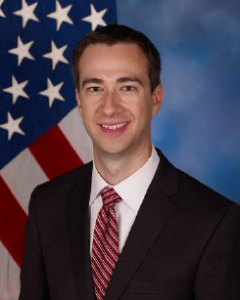
Technical Management Director
U.S. Army
Session: Modernizing Battlefield Communications
Mr. Joseph Welch has served as technical management director of the U.S. Army Program Executive Office Command, Control and Communications – Tactical since October 2016. In this position, he is PEO C3T’s senior engineer and develops long-term strategies for technology research, investment, integration and fielding of tactical communications and mission-command capabilities. In addition, he coordinates system of systems engineering efforts across PEO C3T’s four project managers and with external PEOs to achieve network simplicity, efficiency and interoperability.
Mr. Welch’s previous assignment was technical management division chief of PEO C3T’s Project Manager Tactical Radios from July 2012 to October 2016. He led the development, procurement and fielding of the Army’s modern tactical radio programs. These efforts provided integrated high-speed, high-capacity voice, data and video to enable Soldiers to communicate across vast operational areas. Since beginning his career as a Department of Defense civilian employee in 2000, he has also held positions as chief engineer, lead software/information assurance engineer and computer engineer in other Army and joint organizations.
Mr. Welch holds a master of engineering in systems engineering from Stevens Institute of Technology and a bachelor of science in electrical engineering from Tufts University. He is an Army Acquisition Corps member with a Level III certification in program management and systems planning, research, development and engineering. His awards include the Department of the Army Superior Civilian Service Award in August 2016 and the Army Signal Corps Association Bronze Order of Mercury in December 2014.
Ian Williams
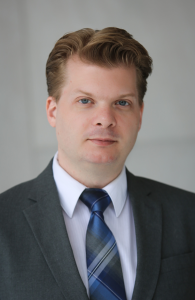
Associate Director
CSIS Missile Defense Project
Session: Modular Air and Missile Defense Modernization